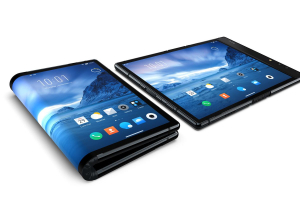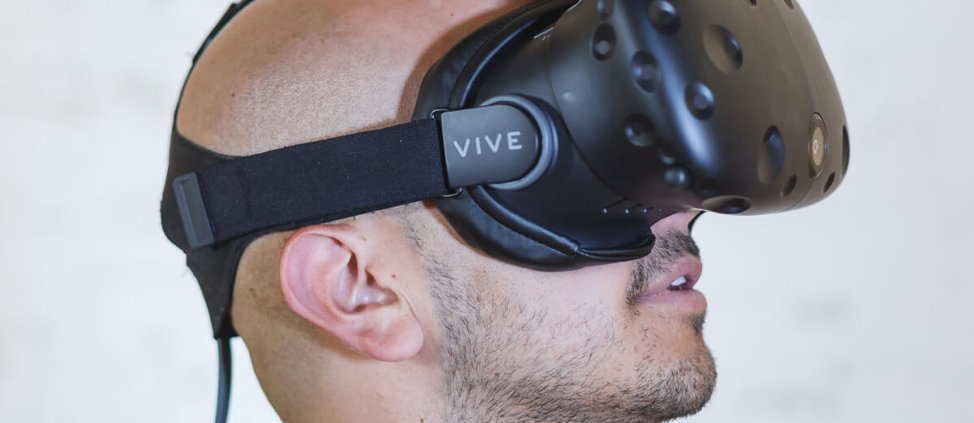Why New Tech Is All About Creating Better Experiences, Not Products
Across large sections of the consumer technology market, meaningful progress has slowed greatly, if not stagnated. Moore’s law no longer delivers as it used to. Current manufacturing methods can’t shrink transistors indefinitely, after all, and even huge improvements in efficiency can’t keep the ball rolling at the same pace.
Consider that many of the core facets of everyday technology have become more than adequate for most of us by now. It was hugely meaningful to go from first-generation resistive phone screens to HD-capable capacitive screens, and satisfying to advance from IPS to AMOLED panels, but what do we see now? Increases in PPI that are barely noticeable to the average phone user? Phones get faster and thinner, but they’re already very fast and thin.
Today, basic tech is good enough for most, and most hardware improvements are incremental. That’s why the most interesting advancements don’t take this route: instead, they focus on using technology to make better experiences. Here’s why this is the way to go:
Experiential marketing is key to online selling
Suppose that you’re on the cusp of releasing your latest smartphone model. The material is revolutionary — smooth, yet blemish-free and perfectly grippy. The performance is lightning-fast and absurdly responsive. The built-in speakers are loud and crystal-clear. There may even be an attention-grabbing gimmick — perhaps you can fold it in half.

All of those things sound great, but most selling has moved online by now. How are you going to use those selling points online? Sure, you can simply mention them, but there’s a stark difference between hearing some great speakers and being told that some speakers are great. Online claims are often perfectly credible, but they feel abstract, so they don’t captivate us.
And when modern products boast about similar things (speed, material quality, price, etc.), it leads to consumer indifference. Every phone company seems to think it offers the best camera quality, so which one are you supposed to believe? If forced to pick, you’ll go with whichever one provides the best experience (in the marketing and purchasing stages, but also — as far you can tell — in post-purchase use).
A great online buying experience can take abstract features and bring them to life somehow. Instead of just showing sample photos, it can show people using the camera in different circumstances. Instead of providing a core set of images, it can provide a comprehensive VR/AR preview (Shopify’s storefront package has had native VR support for years, and added AR Quick Look support in 2018).
It’s cheaper and easier to improve UX than hardware
Everything’s subject to diminishing returns, whether it concerns hardware or software. You can only improve something so much before you start struggling to find ways to innovate. That said, you’re far more likely to run up against a hard limit when trying to improve hardware, and it will prove markedly more expensive to achieve meaningful improvements.
UX, though, provides an immense level of creative opportunity. Whereas hardware upgrades tend to be straightforward (make the screen bigger, make the device use less power, update the connection compatibility, etc.), UX viability is complex and contextual. Tastes change, user needs differ, and — most importantly — the level of computational power already on offer is easily enough to allow someone to create a novel experience.
And while you might think that UX would have been perfected by now, you’d be wrong to do so. Developers get accustomed to doing things in certain established ways, never really considering that those ways might be flawed, but consider how common it is for a major mobile OS (iOS or Android) to significantly change a core UX element in a yearly update.
What’s more, UX doesn’t stop at layouts or navigation elements. It takes the entire user process into account, spanning from the first test to the final use. It includes what the user makes of the seller, how they rated the marketing, and how they’re finding the instructions. In such a long and varied process, there’s a huge amount of room for tweaking things.
Many UX improvements can be patched in
Here’s the inherent difficulty with the practice of casting aside the old model to focus on its replacement: plenty of people are happy to stick with the former. Create a new product, and you’ll need to explain to those using its predecessors why exactly they should pay a hefty sum to get something better but fundamentally similar.
Even if you feel you’re well-placed to drive interest, there’s also the matter of environmental awareness. The tech industry is slowly getting accustomed to the importance of being efficient with resources, and while it’s great to work on hardware that’s more economical, it’s generally better to slow down with the upgrades and extend operational lifespans. This stands to be a core tenet of the IoT (particularly with smart home systems).

Think about OS and firmware updates. When you design a new UX for a product, there’s a decent chance you’ll be able to roll it out across numerous versions, keeping legacy customers happy and making it markedly easier to deal with support requests. And if you make a mistake, you can fix it easily enough (there’s not much you can do with a failed product).
Consider the SaaS model. Its beauty is that the user doesn’t need to think about the product. It’s updated as they go, requiring no installations or complex configurations, and uses a simple pricing structure. That high-quality experience is why it’s become an industry standard. Buying new things can be a hassle — people mainly want what they have to work better.
Any tech startup with grand aspirations would do well to remember these things. Making products better is costly, time-intensive, and challenging, but making experiences better is often remarkably easy. In the end, it isn’t the outright quality of your product that will get you ahead. It’s how it’s perceived — and that’s something you can change.
Author: Kayleigh Alexandra, Microstartups.org



